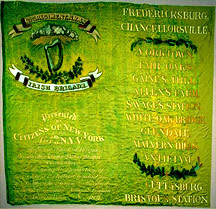
Leave your food, drink and tobacco behind, as well as your pen. You can bring your computer, but not your Dictaphone. And dont ask for an exception. Visitors signing in at Notre Dames University Archives enter into a quintessential academic settinga quiet room with long tables and wooden chairs fitted between neat rows of files and boxes.
The strict rules are necessary, given the priceless contents. As acontrolled environment,none of the materials leave the room. Original items may be handled (with proper care), and requested copies of documents are made and stamped on the premises.
The Archives dates back to the very beginning of the University, but only became visible in the 1880s when it was housed and made accessible for use on the third floor of theMainBuilding. Today the department, with a staff of 10, has space on two floors of the library and an off-site records facility totaling 24,200 square feet. It exists to preserve and maintain the histories of Notre Dame and the Catholic Church inAmerica, a collection which so far totals an estimated 60 million items.
These items are the accumulation of gifts; the Archives has no acquisitions budget, says Wendy Schlereth, director. Its extensive holdings include 18 th century materials from the New Orleans diocese, the writings of Father Sorin, and collections of writings and works by Gen. William Sherman, Thomas Dooley and President Emeritus Rev. Theodore M. Hesburgh, C.S.C. Fragile textile items, such as the Irish Brigade Flag, are only displayed for short periods so that they mayrest and recuperatefrom the damaging effects of exposure to UV rays.
What are the Archivesmain attractions?Anything connected to Notre Dame sports is big,says Charles Lamb, assistant director, who oversees a sports memorabilia collection rich with photos dating back a century.
The Universitys archiving practices use technology to make finding items easier. University Archives was the first in the nation to launch a Web site, in 1993, for browsing and locating specific items. Only about 1 percent of the holdings are available online, but a researcher can at least begin a search just by using the departments online descriptions of how holdings are organized. Schlereth has seen researcher expectations rise as the Archives has made finding its material easier.
The Web site draws plenty of traffic, according to archivist Kevin Cawley, who has seen the site visited at a rate of about 45,000 pages a day.
Another conveniencee-mailhas affected Lambs work dramatically.The number of reference requests I now get has skyrocketed,he says.Its three or four times the number it had been.He sends replies by e-mail as well, and is convinced the medium has created more communication than would have happened in a paper- and telephone-driven world.
The archivists stand among their cohorts in other research repositories who experience some frustration with the technological world. On one hand, software allows the University to duplicate high-quality images of its rare materials to share in such displays asNotre Dame:A Placein History,at theNorthernIndianaCenterfor History.
But at the same time, providing high-quality images on the Web is as good as giving them away (the Archives charges a fee for its historical photos). Lamb has posted about 2,000 sports photos online, making their quality sharp enough to view, but not sharp enough to reproduce as prints.
Providing guidelines for managing all the records created across campus is an ongoing, if not daunting, task. As part of this responsibility, Schlereth seeks ways to archive electronic recordssuccessive generations of Notre Dame Web page designs, for exampleas efficiently as the paper ones. Solutions for the new archival challenges of the 21 st century, she believes, will no longer be simply the work of archivists in one repository, like Notre Dame, but the collaborative efforts of information technology professionals and archivists at the major universities all across the globe. Critically important is finding a way to integrate these electronic resources with more traditional recordsand paying for it.
TopicID: 10982